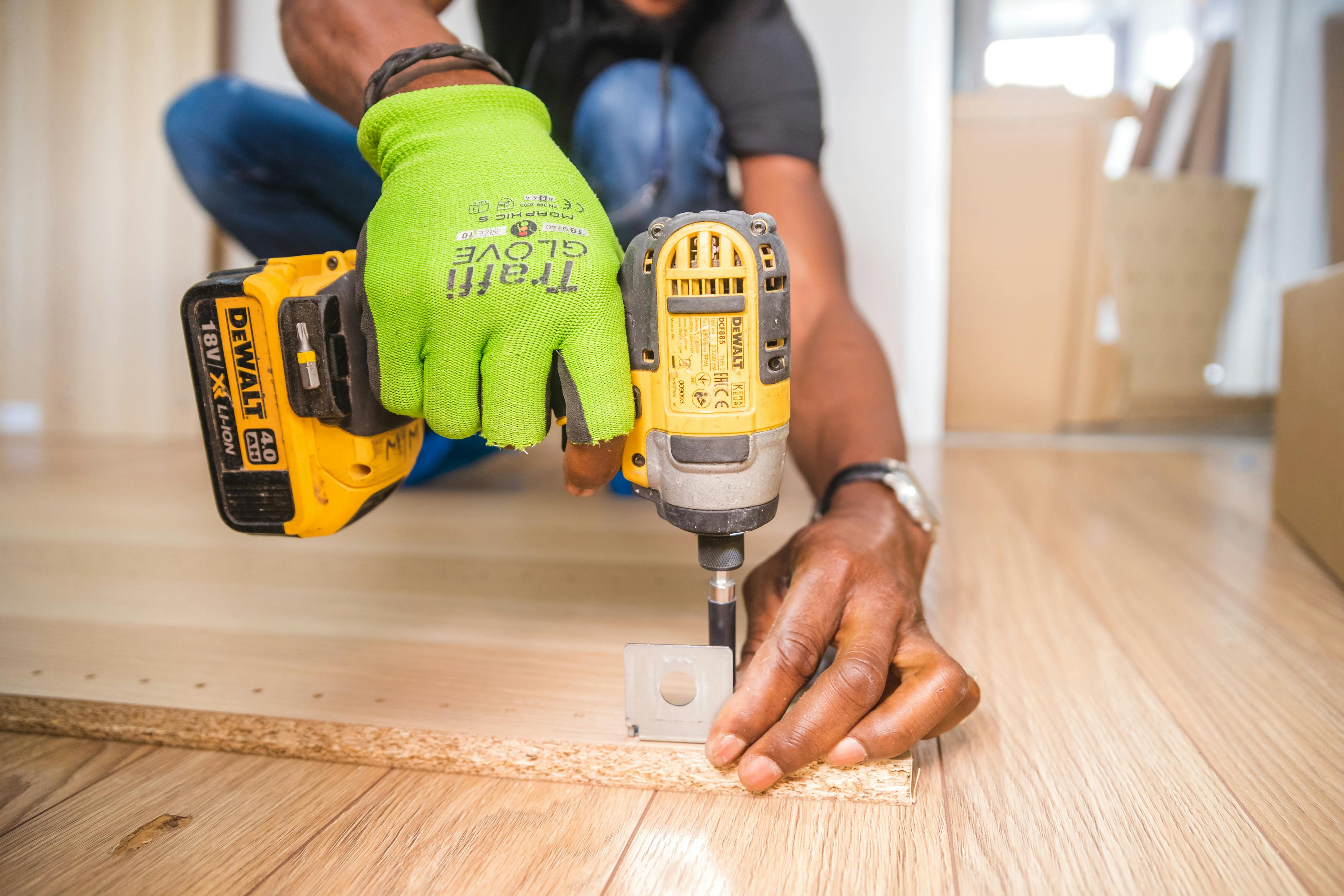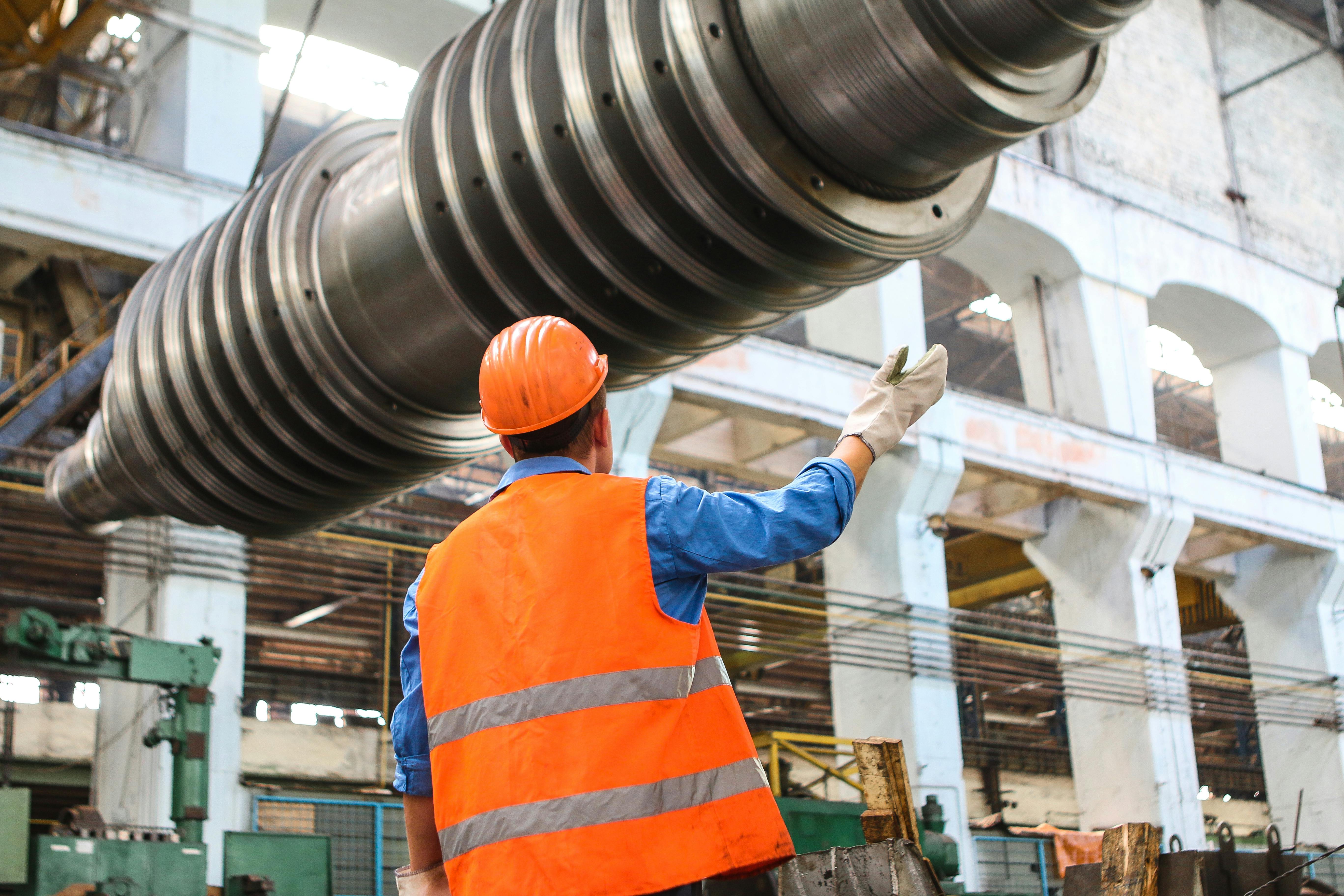What Do Construction Workers Wear

Construction workers must wear appropriate clothing to protect themselves from hazards in their work environment. The type of clothing worn by construction workers will vary depending on the job they are doing, but typically includes heavy-duty items such as boots, gloves, hats, and reflective vests. In addition, construction workers may also need to wear other types of protective gear such as hard hats, safety glasses and ear plugs. By wearing the right clothing and gear, construction workers can help ensure their safety while on the job.Construction workers wear protective gear to protect themselves from potential hazards on the job. These hazards can include dust, debris, noise, heat, and chemicals. Common protective gear worn by construction workers includes hard hats, safety glasses or goggles, hearing protection, respirators, gloves, steel toe boots or shoes with non-slip soles, coveralls or work uniforms with long pants and long sleeves, and high visibility clothing. The specific type of gear worn depends on the job being done and the potential hazards present.
Hard Hats: An Essential Part of Construction Worker Attire
Hard hats are an essential piece of safety equipment for any construction worker, providing vital protection from falling objects, debris, and other potential hazards. Hard hats are designed to deflect blows, absorb shocks, and provide a cushion against impacts. They also provide shade from the sun and protection against electric shock. Hard hats are required on most construction sites and must be worn at all times while working.
Hard hats come in a variety of styles and colors to suit different needs. There are full-brimmed hard hats that provide more coverage around the head and neck area, as well as standard-issue hard hats that offer basic protection from impacts. Some hard hats even have built-in earmuffs or face shields for additional protection. It’s important to choose a hard hat that fits snugly without being too tight or uncomfortable.
When selecting a hard hat for use on a construction site, it’s important to choose one that meets the specific safety standards established by the Occupational Safety and Health Administration (OSHA). OSHA requires that all hard hats used in the workplace meet their criteria for shock absorption, impact resistance, electrical insulation capability, flame retardance, and other features. Hard hats should also be inspected regularly for signs of damage or wear and replaced if necessary.
In addition to providing physical protection on the job site, wearing a hard hat can also serve as an important reminder to workers of the potential hazards they may encounter while working. Hard hats serve as both a symbol of safety awareness and an important reminder of the need to remain alert and aware at all times while on the job site.
Overall, hard hats are an essential part of any construction worker’s attire. They provide vital protection against falling objects, debris, electric shock, sun exposure, impacts, and other potential hazards.It is important that workers select a hard hat that meets OSHA standards in order to ensure maximum levels of safety on the job site.
Keeping Construction Workers Safe and Seen
High visibility clothing is an important factor in ensuring the safety of construction workers. It helps to make them more visible to other people, such as drivers and pedestrians, who may not be aware of their presence. High visibility clothing also helps to reduce the risk of accidents on the worksite by making it easier for workers to be seen by their supervisors and other members of the team. The use of high visibility clothing is especially important in areas where there are a lot of large vehicles or where there are low light conditions.
High visibility clothing typically consists of a bright, reflective material that can be seen from far distances. The reflective material used in the clothing typically has a fluorescent color, which makes it easier to spot from a distance. This type of clothing is often worn by construction workers on roadsides and highways, as well as in dark tunnels and other low light environments. The reflective material helps to make them more visible to drivers and pedestrians who may not be aware of their presence otherwise.
High visibility clothing is designed with safety in mind and should be worn whenever working in hazardous or potentially dangerous areas. It is also important for construction workers to wear the appropriate protective gear such as hard hats, steel-toe boots, gloves, and goggles when working on a worksite. By taking these precautions, construction workers can reduce the chances of being injured or killed while on the job.
The use of high visibility clothing can help ensure that construction workers remain safe while working on a construction site. By making themselves more visible to others, they can help prevent potential accidents from occurring and ensure that everyone stays safe while on the job. This type of clothing will also help them stand out from their surroundings so that they can easily be located if something were to happen while they were on the job.
High visibility clothing is an important part of keeping construction workers safe and seen. By wearing this type of clothing while working on a worksite, workers can help ensure their safety while also making themselves more visible to others who may not otherwise be aware of their presence.
Protective Footwear: Keeping Construction Workers Comfortable and Safe
Construction workers face many risks in their work environment. From falling debris to sharp equipment, it’s important to wear the right gear to keep yourself safe. Protective footwear is essential to keeping construction workers comfortable and safe on the job.
Not only do protective shoes help protect feet from impacts, cuts, and abrasions, they also help reduce fatigue by providing comfort and support for long days on your feet. Construction workers can choose from a variety of styles of protective footwear, including steel-toed boots, work shoes, and safety clogs. Steel-toed boots are a popular choice for many construction sites as they provide maximum protection for the toes while still remaining lightweight and comfortable. Work shoes are also a great option for those who need more flexibility in their footwear while still offering plenty of protection. Safety clogs are another option for those who need extra arch support or for those who may be working in wet areas frequently.
When choosing protective footwear for a construction job site, it’s important to consider the specific tasks you’ll be doing so that you can choose the right type of shoe that offers the correct protection and support for your needs. Make sure you also select a pair that is slip resistant and waterproof so that you can stay safe even when working in wet environments or on slippery surfaces. It’s also important to make sure your shoes fit properly; ill-fitting shoes can cause blisters or even lead to injuries if they are too tight or too loose.
Protective footwear is an essential part of any construction worker’s wardrobe as it helps keep them comfortable and safe while on the job site. Whether you opt for steel-toed boots, work shoes, or safety clogs, make sure to choose carefully so that you stay safe wherever your work takes you!
Fire-Retardant Clothing: Providing Essential Protection to Construction Workers
Many construction workers are exposed to hazardous working conditions, such as the risk of fire and exposure to extreme heat. As a result, it is essential that they wear protective clothing that can provide them with protection from these potentially life-threatening conditions. Fire-retardant clothing has become an increasingly popular choice for construction workers, as it not only provides protection from the elements but also offers maximum comfort and flexibility.
Fire-retardant clothing is made from materials that are designed to resist burning when exposed to heat or flame. It is typically designed with multiple layers of fabric that can help protect against flames and high temperatures for up to 15 minutes. The fabric is also treated with chemical agents that can help provide additional protection against fire and heat. This type of clothing is available in a variety of styles, including jackets, coveralls, pants, shirts, and boots.
In addition to providing protection from fire and heat, fire-retardant clothing also helps reduce the spread of sparks or hot materials when welding or using other tools that generate sparks. This type of clothing can also help protect against electric arcs when working with electrical equipment. It also helps reduce the risk of serious burns if a worker were to come into contact with a hot surface or object.
Fire-retardant clothing is designed to be comfortable and flexible enough for everyday use on a construction site. It is typically light-weight yet durable and breathable enough for long hours in the sun or in other extreme temperatures. The fabric has been designed to be resistant to shrinkage or fading over time so it maintains its protective qualities even after multiple washings.
Overall, fire-retardant clothing provides essential protection for construction workers who are exposed to hazardous working conditions every day. By providing protection from flames, sparks, electric arcs, and extreme temperatures it helps keep workers safe on the job while still offering them maximum comfort and flexibility throughout their workday.

Gloves: Protecting Hands from the Elements
Gloves are an important piece of clothing for protecting hands from the elements. Not only do they keep hands warm in cold weather, but they can also protect from sunburn, dirt, and other hazards. Gloves come in a variety of materials, colors, and sizes to fit any hand size. They can be made of leather, cotton, wool, synthetic fabrics, or a combination of materials. Some gloves are designed to be waterproof and windproof to keep hands warm and dry in extreme temperatures. Others are lightly insulated for everyday wear. Each type of glove has its own advantages and disadvantages.
When selecting gloves for outdoor activities such as hiking or skiing, it is important to choose a material that is comfortable and provides enough insulation for the activity. For cold weather activities such as skiing or snowboarding, it is important to choose gloves that are waterproof and windproof. For moderate weather activities such as hiking or biking, light insulation may be sufficient. Cotton gloves may provide some protection from the sun but will not provide much insulation or warmth.
In addition to providing protection from the elements, gloves can also provide grip on wet surfaces such as rocks or logs. This can be especially helpful when climbing rocks or trees. Leather gloves with extra grip on the palms and fingers can give you extra traction when you need it most. When selecting gloves for outdoor activities such as climbing or mountain biking, make sure they have enough grip to prevent slipping.
Gloves are an essential piece of clothing for protecting hands from the elements and providing grip when needed outdoors. Choose a material that is comfortable and provides enough protection depending on the activity you plan on doing outdoors. With so many materials available today there is sure to be a glove that fits your needs perfectly!
Hearing Protection on the Job Site
Noise pollution in the workplace can be a serious hazard for workers. The Occupational Safety and Health Administration (OSHA) has issued regulations on noise levels in the workplace, and employers are expected to comply with these regulations. To protect workers’ ears from loud noises, employers must provide hearing protection. Hearing protection can come in many forms, including ear plugs, ear muffs, and other devices that cover or protect the ears.
Ear plugs are one of the most common forms of hearing protection. They are typically made of foam or rubber materials and are designed to fit comfortably inside the ear canal. Ear plugs can help block out loud noises and reduce the risk of hearing loss. They should be worn whenever workers are exposed to loud noise levels or machinery that produces high levels of sound.
Ear muffs are another form of hearing protection that is commonly used in industrial settings. These devices cover the entire ear and reduce the amount of sound that reaches them. Ear muffs are usually adjustable so they fit comfortably over most head sizes, and they can be used with other protective equipment like helmets or goggles. They should also be worn when workers are exposed to loud noises or machinery for extended periods of time.
Other forms of hearing protection may include devices such as acoustic curtains or baffles that can reduce noise levels in certain areas of a work site by blocking out sound waves or dispersing them away from workers’ ears. Employers should also provide instruction to their workers on how to properly use any type of hearing protection they provide, as well as how to identify signs and symptoms of hearing loss due to prolonged exposure to loud noise levels.
By providing effective hearing protection for their employees, employers can help reduce occupational noise pollution and protect their workers from potential health risks associated with prolonged exposure to loud sounds or machinery on the job site.
Protective Equipment
In order to ensure worker safety from hazardous noise levels on a job site, employers must provide appropriate protective equipment for their employees. This includes providing instructions on how to properly use any type of protective equipment being worn such as ear plugs or ear muffs as well as providing additional safety measures like acoustic curtains or baffles if needed. Employers must also make sure that any type of protective equipment is comfortable enough for employees so it won’t interfere with their ability to do their job effectively.
Adequate Training
Adequate training is essential when it comes to protecting employees from hazardous noise levels on a job site. Employers should provide instruction on how to properly use any type of protective equipment being worn as well as making sure employees understand what types of noises they might encounter while working in an industrial setting and how best to protect themselves from them such as using proper hearing protection when needed or avoiding certain areas where there may be higher concentrations of loud noises like near large machines running at full power.
Employers must also ensure that their employees understand the signs and symptoms associated with prolonged exposure to hazardous noise levels so they know when it is time for them to take a break from work or seek medical attention if necessary
Respiratory Protection: Keeping Construction Workers Healthy and Safe
Construction workers are exposed to a variety of hazards on the job, including dangerous dust, fumes, and gases that can cause serious respiratory illnesses. To protect workers from these dangers, employers must provide appropriate respiratory protection gear for their workers. Respirators come in a variety of styles and types, and the right respirator should be chosen based on the specific hazards present in the work environment.
Respirators are categorized according to their level of protection, with some providing more protection than others. The most basic type of respirator is a dust mask, which is designed to filter out particles such as dust and debris. These masks are inexpensive and disposable, but they do not offer any protection from hazardous fumes or gases. For more protection, employers should consider providing half-face or full-face respirators with replaceable cartridges that contain activated carbon filters.
When selecting respirators for construction workers, it is important to choose models that are approved by the National Institute for Occupational Safety and Health (NIOSH). This is because NIOSH tests all respirators to ensure they meet quality standards for safety and effectiveness. Employers should also provide training for their employees on how to properly use their respirators in order to ensure maximum safety.
In addition to providing the right type of respiratory protection gear for their workers, employers must also ensure that it is properly maintained. This includes regularly inspecting respirators for signs of wear or damage and replacing cartridges as needed. Employers should also create a maintenance schedule to ensure that respirators are properly maintained at all times.
Respiratory protection is an important part of keeping construction workers safe on the job. By providing appropriate respiratory gear and ensuring it is well-maintained, employers can help protect their workers from hazardous particles and gases in the workplace environment.

Conclusion
Construction workers wear a range of gear depending on the job they are doing and the particular environment in which they are working. Personal protective equipment, such as hard hats, safety glasses, protective clothing, and steel-tipped boots are essential components of their attire. Construction workers also need to wear clothing that is comfortable and durable enough to last through a day’s work. It is important that they choose clothing that helps them stay safe, comfortable, and productive on the job.
At the end of the day, what construction workers wear depends on their job and the environment in which they are working. They must choose appropriate attire that offers protection from hazards while still allowing them to stay comfortable and productive throughout their shift. By taking all these factors into consideration, construction workers can ensure that they have the right clothing for a safe and successful workday.
